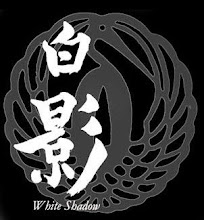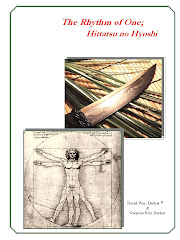 Item number three:
Item number three:Do you know how to use that knife? That may sound exceedingly arrogant but when we are talking about using a knife tactically or in a self-defense situation your truthful response may mean the difference between life or death. You may or may not agree with what I am going to say. That’s ok, we can disagree and no harm is done when all that is at risk is some words and opinions floating across cyberspace.
Most of you know the old cliché,’ God created man, Samuel Colt made them equal. A knife has a similar equalizing effect when it’s brought into a conflict. It doesn’t need to be a big knife or an expensive custom knife. A friend of mine recently told me about answering a call where a man died from one thrust from a “two dollar steak knife.” (This friend just bought one of our Cobras for concealed carry.) There is another saying that is germane to this topic; a sixteen year old with a knife equals a black-belt with sixteen years experience. Or something to that effect. You get my point.
I have found that the concepts and techniques in our book, The Rhythm of One, stand up pretty good during randori, or free style sparring. (The photo is from our book) You’re right that doesn’t mean they will work every time on the streets or parking lots. A lot depends on how often you train and how seriously you train. I can tell you for sure what won’t work, and that is 90% of the techniques taught in strip mall martial arts schools. Why do I say that? Because I learned those techniques too and then I spent time figuring out how to counter them. Luckily I had teachers like Bob Cook sensei and others who went beyond the BS techniques to teach us serious edged weapons.

You need to find a teacher or school that is based in fighting/defending with edged weapons not just pie in the sky unarmed defenses. Real knife work is not pretty, it’s not Politically Correct. It is gritty and if you always win in class against the armed attacker, it ain’t real! It may be flowing and graceful or it might resemble a bad case of blunt force trauma, but given the statistic that the average knife fight lasts three (3) seconds, you cannot spend a lot of time waltzing around shifting grips and stumbling-bumbling around disarming your compliant “attacker.” If your teacher, or one you are considering, doesn’t approve of offensive knife training go somewhere else. What might be helpful is if next week I post a listing of books or videos that I feel are truly of value. I put this list in the appendix of our books but I’ll pare it down to the best of the best and share it with you. Maybe it will save you some money (because there are a lot of terrible books and videos out there) and maybe even save your life. By the way don't believe everything you see on Yu-Tube, there are a lot of strange things out there in cyberspace.
Oh yeah and one more thing. You might be the biggest, baddest knife fighter in the world, but if the SHTF and you aren’t carrying, you’re just another appetizer on the bad guy’s menu.






 So begin your quest with number one and go straight to number two. Just a warning, there are no cheap, dependable, fighting knives that are worth carrying. Next, hunt around for a reputable edged weapons school (not a karate or TKD school) or contact us for number three, solid knife instruction. That number four, good luck with that one. I have accumulated knives with blades from under two inches to over fourteen inches and each one was bought for a specific need, imagined or otherwise. Depending on where you travel any of them might be illegal. So focus primarily on number two and be honest about what you really need a knife to do. Always buy the best knife you can afford, even if it hurts a little bit. Once you have it, come by and visit with us, we’ll get y
So begin your quest with number one and go straight to number two. Just a warning, there are no cheap, dependable, fighting knives that are worth carrying. Next, hunt around for a reputable edged weapons school (not a karate or TKD school) or contact us for number three, solid knife instruction. That number four, good luck with that one. I have accumulated knives with blades from under two inches to over fourteen inches and each one was bought for a specific need, imagined or otherwise. Depending on where you travel any of them might be illegal. So focus primarily on number two and be honest about what you really need a knife to do. Always buy the best knife you can afford, even if it hurts a little bit. Once you have it, come by and visit with us, we’ll get y





